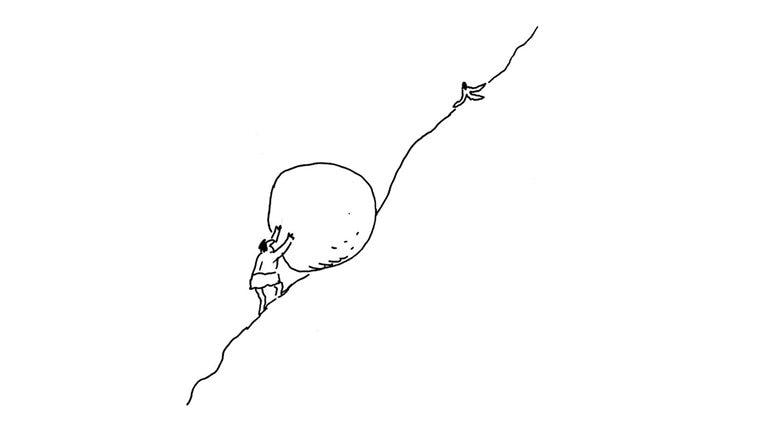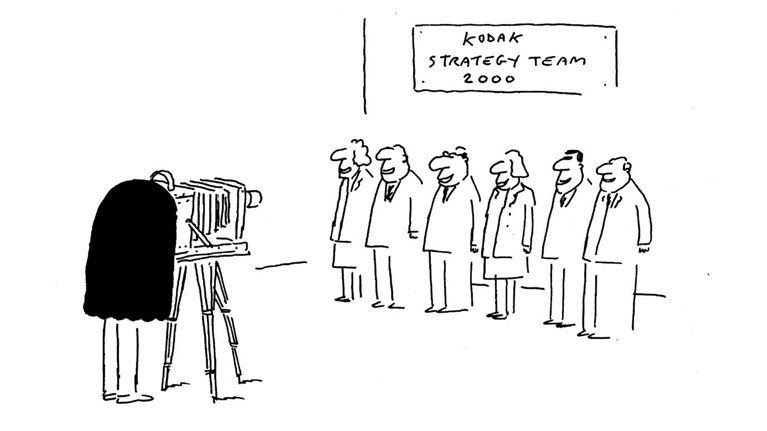Strategy books, we’ve read a few. But this one is different. Out in early February, Strategy Beyond the Hockey Stick: People, Probabilities and Big Moves to Beat the Odds, a new book by McKinsey experts Chris Bradley, Martin Hirt, and Sven Smit, uses humorous cartoons to tackle the hard questions about setting a course for your business.
We sat down with Chris to find out more about this new take on an evergreen subject.
Why this book?
We wanted to define the modern approach to strategy. Thanks to new technology, we can look at huge data sets about companies’ performance over time and unite that analysis with what we know about how people actually act in the strategy room. It’s more big data, more empiricism, less theorizing. Plus social intelligence, thanks to behavioral economics and psychology.
I think we’re naming things that are known but haven’t been named. And now we can have a conversation about what to do about them.
Why now?
The book was triggered by some research we did about why companies fail or succeed— not according to frameworks or theories but by collecting and analyzing the hard data about companies’ performance over time. We discovered a few things. The first thing we discovered is that only one company in 12 manages to make the leap from middle of the pack to exceptional in a ten-year period. Those aren’t great odds, but what this says to us is that the world of strategy is dynamic enough that you can actually change your position in the market with the right strategy.
Our research is motivated by the question: Is there a way to beat those 1-in-12 odds? And what we found out was, yes there is, if you can use the big trends in your industry as tailwinds.
The second thing we discovered looking at the data was that bold decisions, big moves, and getting ahead of trends were the things that drove successful strategy. But when my coauthors and I looked at how strategy was actually being practiced, we noticed a big disconnect. The actual practice of strategy tends to have outcomes that are incremental, with a high degree of inertia in resource allocation.
So the book was really a product of those two ideas. We think of it as reconciling the bird’s eye view of what’s true and empirical, and the on-the-ground view that’s driven by situational specifics and the social side of strategy.
Our book says that there’s another way to do strategy, one that unites what we learned looking at the hard data with what we know about the social side of strategy—and one that will help you make the big moves needed for success and to beat the odds.

Tell us more about the social side of strategy.
The social side of strategy is all about the interpersonal and organizational dynamics that prevent people from having the hard conversations you need to make the big changes that we know have the best shot at boosting a company’s performance. It’s about how, when we walk to the meeting room, we’ve all got the best of intentions, we all want to have an honest discussion and create a clear view for the future. But when we enter the meeting room, we find that it’s full of people, and people have biases, and internal politics, and competition for resources.
Why cartoons?
In our book, we found out that cartoons helped us characterize things and draw the truth out more clearly, more easily.
We could use humor to connect with our audience, “walk” alongside them, have them look at the system, and laugh at it. And then, we want them to think about what we are going to do about it.
We found two very talented cartoonists, Jeremy Banks and Mike Shapiro, and we gave them our manuscript and asked them to respond with cartoons. They generated far more than we ever intended to use, but they were so powerful. We ended up wanting to use all of them. The cartoons are just a great way to build that bridge with our audience and say, “Hey, we’ve all been there before.” Just presenting the data and all those hard-hitting truths could be a little brutal—but you know what they say, “A spoonful of sugar helps the medicine go down.” I personally think the cartoons are really, really funny.
They are!
The cool thing is, that’s just the cartoonists responding to our manuscript.
Any favorites?
I think my favorite is the Kodak one. I think it just says so much about that case, and it really brings what we mean about the “inside view” of strategy to life, when people are just trapped in their own view of the world, rather than getting a fresh, outside perspective and taking a hard look at the empirical realities—this is not only required for success, it’s also actually the safest, smartest strategy because it spurs you to action. Market forces are violent for unprepared companies, and the status quo is not safe.

The cartoons seemed to poke fun at a certain way of thinking. Would you agree?
It was very important to us in writing the book that this was not an academic view of how strategy ought to be, but that it’s a practitioner’s view of what actually happens and the real challenges of creating a company’s strategy. It’s easy to cheat ourselves, with our MBA tools and our frameworks, into thinking we’re doing the right thing. The sharp tone of the cartoons highlights how strategy is about making the right big moves, which you do by building belief and conviction in a team. And if you don’t start with an understanding of the social side of strategy and what sustains inertia inside companies, you’re not going to mount that necessary charge.
When the cartoonists first submitted their work to you, was there any revision?
How we set it up was, we encouraged them to submit as many cartoons as they could. They ended up giving us 90 cartoons and we used 65 of them. We loved their fresh, creative energy. Jeremy Banks drew the image we used on the cover. He had wanted to go back and touch up it up, but we ended up sticking with the original sketch because we loved its rougher, fresher energy.